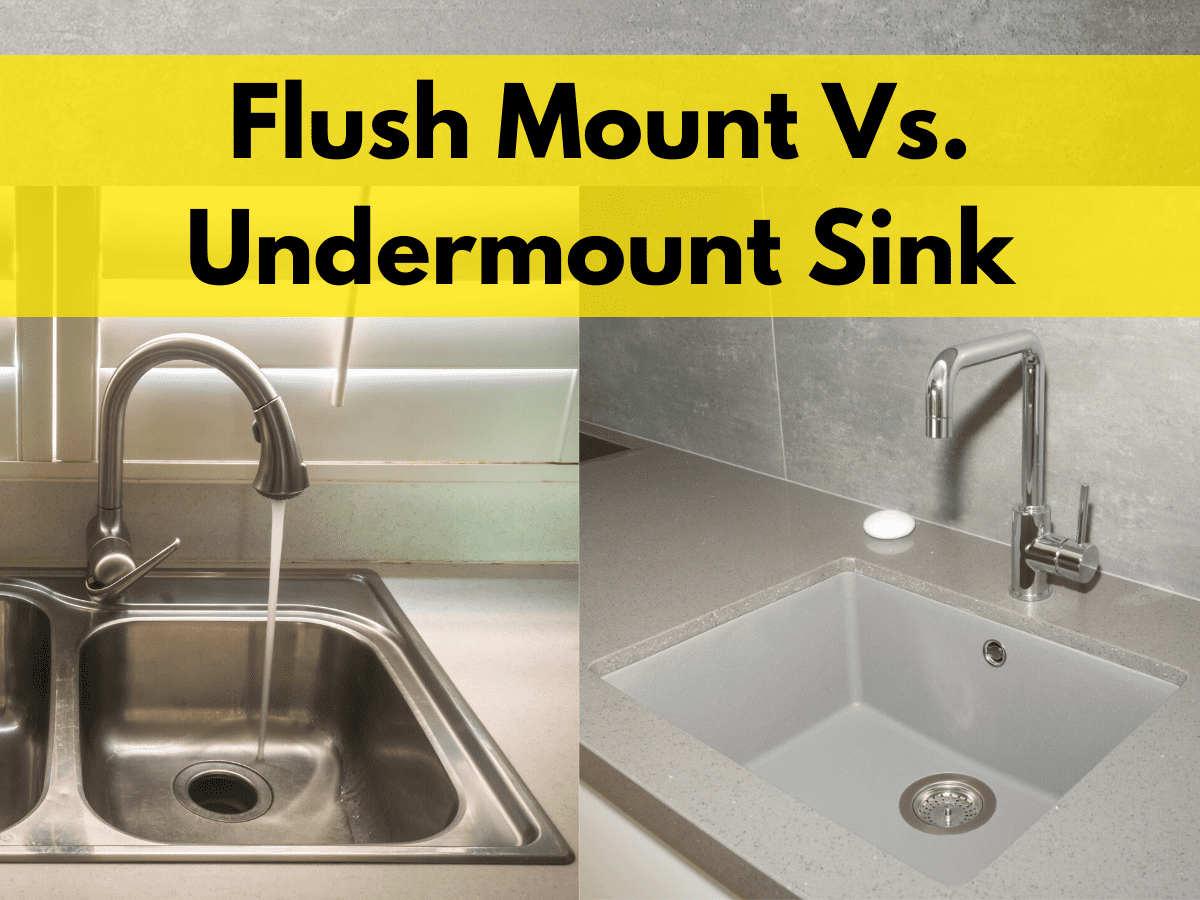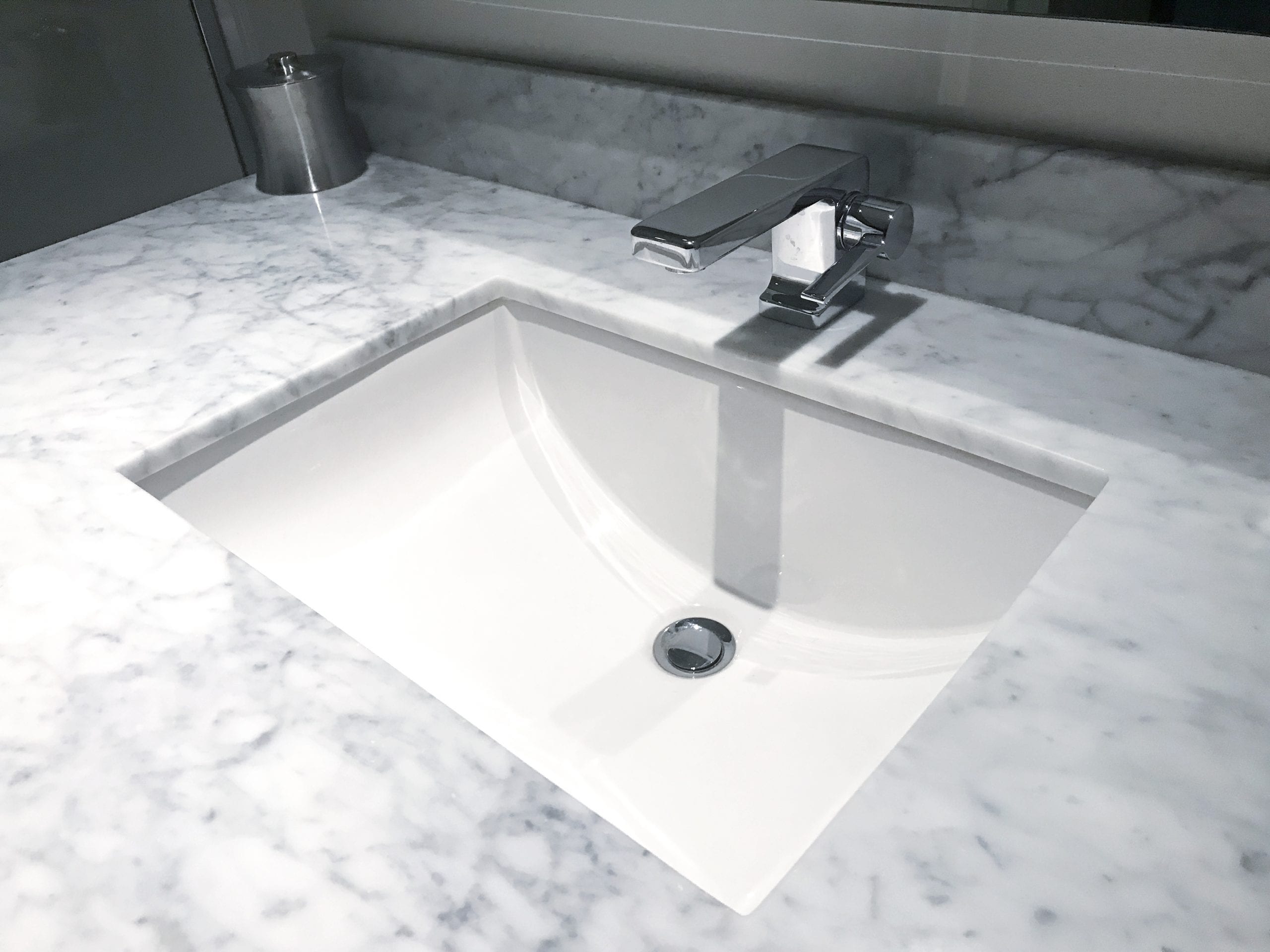When it comes to choosing a sink for your bathroom, there are two main options: undermount sinks and drop in sinks. While both serve the same purpose, there are some key differences between the two that you should consider before making a decision. In this article, we will explore the differences between undermount and drop in bathroom sinks to help you make an informed choice for your bathroom.Undermount Sink vs Drop In Bathroom Sink: What's the Difference?
The main difference between undermount and drop in sinks is the way they are installed. Undermount sinks are mounted underneath the countertop, while drop in sinks sit on top of the countertop. This difference in installation method has a significant impact on the overall look and functionality of the sink, as well as the cost of installation.Undermount vs Drop-In Sinks: Which One Should You Choose?
Pros of Undermount Sinks: Undermount sinks are a popular choice for modern bathrooms due to their sleek and seamless appearance. They are installed from underneath, which means there is no visible rim on the countertop. This makes cleaning easier as there are no edges or crevices for dirt and grime to collect. Undermount sinks also create more counter space, as there is no sink rim taking up space. Cons of Undermount Sinks: The installation process for undermount sinks can be more complicated and may require professional help. Additionally, undermount sinks can be more expensive than drop in sinks due to the extra labor and materials needed for installation. Pros of Drop In Sinks: Drop in sinks are much easier to install and can often be DIY projects. They are also more budget-friendly compared to undermount sinks. Additionally, drop in sinks are available in a wider variety of styles and designs, making it easier to find one that fits your bathroom aesthetic. Cons of Drop In Sinks: Due to the lip or rim of the sink sitting on top of the countertop, cleaning can be more challenging as dirt and grime can collect around the edges. Drop in sinks also take up more counter space compared to undermount sinks.Undermount Sink vs Drop In Bathroom Sink: Pros and Cons
Installing an undermount sink requires cutting a hole in the countertop to fit the sink and securing it from underneath. This process can be tricky and may require professional help. On the other hand, drop in sinks can be easily installed by simply placing the sink on top of the cutout in the countertop and attaching it with clips or adhesive.Undermount Sink vs Drop In Bathroom Sink: Installation Comparison
As mentioned earlier, undermount sinks have a seamless design with no visible edges or crevices, making them easier to clean. Drop in sinks, on the other hand, have a visible rim that can collect dirt and grime, requiring more effort to keep clean. When it comes to maintenance, both types of sinks require regular cleaning to prevent staining and buildup. However, undermount sinks may require re-caulking over time to maintain a secure fit, while drop in sinks may need to be resealed around the edges.Undermount Sink vs Drop In Bathroom Sink: Maintenance and Cleaning
When it comes to cost, undermount sinks are generally more expensive than drop in sinks. This is due to the extra labor and materials required for installation. However, the long-term cost of maintenance and cleaning may be higher for drop in sinks, making the overall cost similar in the long run.Undermount Sink vs Drop In Bathroom Sink: Cost Comparison
Undermount sinks are known for their sleek and modern look, making them a popular choice for contemporary bathrooms. They also come in a variety of materials, such as porcelain, stainless steel, and granite, allowing for more customization options. Drop in sinks, on the other hand, are available in a wider variety of styles and designs, making them a versatile choice for any bathroom aesthetic.Undermount Sink vs Drop In Bathroom Sink: Design and Style Differences
Both undermount and drop in sinks can be durable and long-lasting when properly maintained. However, undermount sinks may be more susceptible to damage if not installed correctly, as the weight of the sink is supported by the countertop. Drop in sinks, on the other hand, are more secure and less likely to shift or crack over time.Undermount Sink vs Drop In Bathroom Sink: Durability and Longevity
If you are considering installing the sink yourself, drop in sinks are generally easier to install as they do not require any cutting or special tools. However, if you are hiring a professional, the installation process for either type of sink should not be a significant factor in your decision.Undermount Sink vs Drop In Bathroom Sink: Which is Easier to Install?
For smaller bathrooms, undermount sinks can be a better choice as they create more counter space and give the illusion of a larger bathroom. Drop in sinks, on the other hand, take up more counter space and may make a small bathroom feel even more cramped.Undermount Sink vs Drop In Bathroom Sink: Which is Better for Small Bathrooms?
The Aesthetic Appeal

Dive into the World of Undermount and Drop-In Bathroom Sinks
 When it comes to designing a bathroom, every detail matters. From the tiles on the floor to the color of the walls, every element plays a crucial role in creating the perfect ambiance. And when it comes to choosing between an undermount sink versus drop-in bathroom sink, the decision can be just as important. Let's dive into the world of these two popular sink styles and explore their aesthetic appeal.
Undermount sinks
are known for their sleek and modern look. These sinks are mounted
underneath
the countertop, creating a seamless and streamlined look. The edge of the sink is hidden, giving the illusion of a larger countertop space. This style is perfect for those who prefer a clean and minimalist design in their bathroom. Additionally,
undermount sinks
are available in a variety of materials such as porcelain, stainless steel, and granite, allowing you to choose the one that best fits your style and needs.
On the other hand,
drop-in bathroom sinks
are installed from the top
and rest on the countertop surface. This style is more traditional and creates a more visible and defined look. The rim of the sink can be seen, adding a decorative element to the overall design.
Drop-in bathroom sinks
are also available in various materials, but they are often seen in ceramic or porcelain, giving a classic and timeless feel to the bathroom.
Both
undermount
and
drop-in bathroom sinks
have their own unique aesthetic appeal. It all depends on the overall design and style of your bathroom. If you prefer a modern and clean look,
undermount sinks
would be the perfect choice. However, if you want to add a touch of tradition and elegance to your bathroom,
drop-in sinks
would be the way to go.
In terms of maintenance and cleaning,
undermount sinks
may have an advantage. Since the sink is mounted underneath the countertop, there are no edges or crevices for dirt and grime to accumulate. This makes cleaning and maintenance easier and more efficient.
Drop-in sinks
, on the other hand, have a visible rim that can collect dirt and grime, making it slightly more challenging to clean.
In conclusion, when it comes to choosing between an undermount sink versus drop-in bathroom sink, it all boils down to personal preference and the overall design of your bathroom. Both styles have their own unique aesthetic appeal and practicality. So, whether you opt for a modern and sleek look or a classic and traditional design, make sure to choose a sink that best suits your needs and complements the overall design of your bathroom.
When it comes to designing a bathroom, every detail matters. From the tiles on the floor to the color of the walls, every element plays a crucial role in creating the perfect ambiance. And when it comes to choosing between an undermount sink versus drop-in bathroom sink, the decision can be just as important. Let's dive into the world of these two popular sink styles and explore their aesthetic appeal.
Undermount sinks
are known for their sleek and modern look. These sinks are mounted
underneath
the countertop, creating a seamless and streamlined look. The edge of the sink is hidden, giving the illusion of a larger countertop space. This style is perfect for those who prefer a clean and minimalist design in their bathroom. Additionally,
undermount sinks
are available in a variety of materials such as porcelain, stainless steel, and granite, allowing you to choose the one that best fits your style and needs.
On the other hand,
drop-in bathroom sinks
are installed from the top
and rest on the countertop surface. This style is more traditional and creates a more visible and defined look. The rim of the sink can be seen, adding a decorative element to the overall design.
Drop-in bathroom sinks
are also available in various materials, but they are often seen in ceramic or porcelain, giving a classic and timeless feel to the bathroom.
Both
undermount
and
drop-in bathroom sinks
have their own unique aesthetic appeal. It all depends on the overall design and style of your bathroom. If you prefer a modern and clean look,
undermount sinks
would be the perfect choice. However, if you want to add a touch of tradition and elegance to your bathroom,
drop-in sinks
would be the way to go.
In terms of maintenance and cleaning,
undermount sinks
may have an advantage. Since the sink is mounted underneath the countertop, there are no edges or crevices for dirt and grime to accumulate. This makes cleaning and maintenance easier and more efficient.
Drop-in sinks
, on the other hand, have a visible rim that can collect dirt and grime, making it slightly more challenging to clean.
In conclusion, when it comes to choosing between an undermount sink versus drop-in bathroom sink, it all boils down to personal preference and the overall design of your bathroom. Both styles have their own unique aesthetic appeal and practicality. So, whether you opt for a modern and sleek look or a classic and traditional design, make sure to choose a sink that best suits your needs and complements the overall design of your bathroom.


























:max_bytes(150000):strip_icc()/undermount-vs-drop-in-kitchen-sink-1821203-FINA--5bb521accff47e0026d4ad95.png)



























